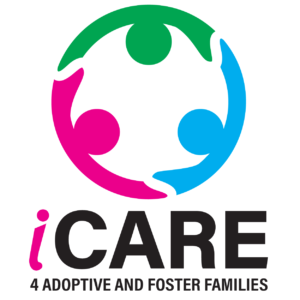Understanding the Impact on a Child’s Brain
Children who have experienced adoption, foster care, or kinship placement often carry a higher level of stress than their peers. This stress doesn’t stem from everyday challenges alone, but from the deeper emotional and psychological impacts of attachment and developmental trauma. These experiences can have a profound effect on a child’s brain development and overall well-being.

Why Stress Affects These Kids Differently
Children who face early separation, neglect, or inconsistent caregiving are often forced to adapt to survive in an unpredictable world. As a result, their stress response system becomes overactive. Their brains are constantly on alert, preparing for potential danger even in safe environments. This survival mechanism can lead to heightened feelings of fear, anxiety, or emotional withdrawal.
In these circumstances, children often struggle to emotionally regulate. Their reactions to stress are often intense, and they can be triggered by seemingly minor events throughout the day. These emotional responses may appear disproportionate or unpredictable to others, but they are rooted in the child’s learned experience of uncertainty and emotional turmoil.
Big Feelings and Big Responses
For children dealing with the effects of trauma, emotional regulation doesn’t come easily. These kids often have big feelings, and their reactions may seem overwhelming. For example, an incident that might seem minor to others—a loud sound, a change in routine, or a sudden request to change tasks—can trigger an intense response. The child might lash out, shut down, or struggle to focus.
It’s important to recognize that these responses are not deliberate defiance, but survival mechanisms. Their brains are wired to protect them from perceived threats, and even in a safe environment like school, their nervous systems are on high alert. This can make everyday situations feel overwhelming.
The Role of Schools in Helping Kids Regulate Emotion
Schools are full of triggers for children who have experienced trauma. From the unpredictability of schoolwork to the dynamics of peer relationships, these kids face daily challenges to their emotional regulation. This is why it’s so important for schools to create a predictable, nurturing environment where students feel safe, supported, and understood.
Building routines is one of the most effective ways to help children feel secure. When kids know what to expect, they can begin to feel more in control and less anxious. Providing clear expectations, regular check-ins, and emotional support can help them navigate stressful situations with more resilience.
Educators and caregivers should also be mindful of the stress responses these children may exhibit. Rather than viewing emotional outbursts or shutdowns as behavioral issues, it’s crucial to understand them as reactions to stress and trauma. With this mindset, adults can approach these situations with empathy, offering calming strategies and a sense of safety.

Healing Takes Time: Emotional Regulation is a Process
Learning emotional regulation takes time, especially for children who have experienced significant trauma. While progress might be slow, it’s important to remember that healing is possible. With consistent emotional support, these children can gradually retrain their brains to respond more calmly and appropriately to stress.
Research shows that the brain can rewire itself through positive, secure relationships. By experiencing nurturing interactions with adults who are predictable, patient, and understanding, children begin to learn that they can trust their environment and the people around them. This shift helps to calm the overactive stress response, making it easier for children to emotionally regulate.
The Power of Connection: Moving from Stress to Safety
The key to helping children who have experienced trauma is connection. It’s not just about providing structure and routines; it’s about fostering relationships that make these children feel seen, heard, and safe. This might mean offering extra time for emotional processing, practicing mindfulness techniques, or simply providing a consistent adult presence they can rely on.
By prioritizing emotional connection and predictability, we help these children shift from a place of fear and stress to one of safety, trust, and growth. Whether it’s a teacher, caregiver, or mentor, every supportive adult plays a role in helping these kids heal and thrive.
Children who have experienced adoption, foster care, or kinship placement often carry invisible burdens of stress that shape their emotional and social responses. But with time, patience, and the right support, they can learn to regulate their emotions and navigate the challenges of daily life. By creating safe, predictable environments and fostering strong relationships, schools and families can provide the foundation for healing and growth. Every child deserves the opportunity to move from survival mode to thriving—and it all begins with the power of connection.

